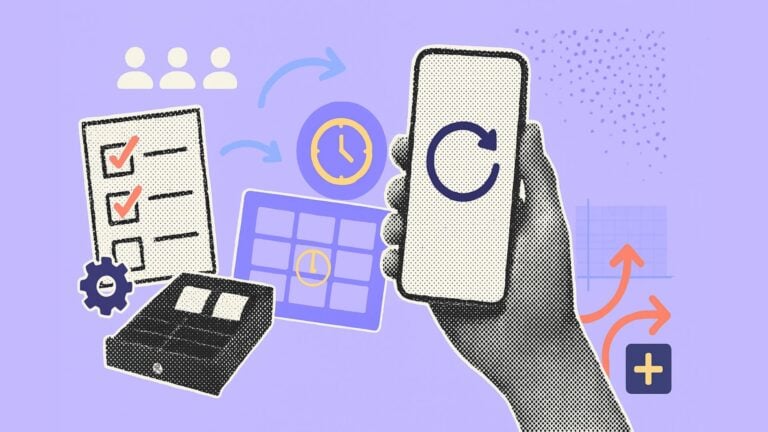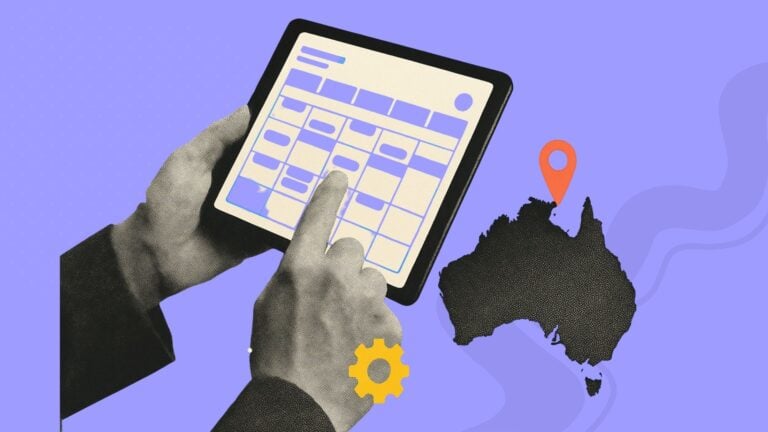Workforce management is crucial for efficiency, compliance, and employee satisfaction. We explore the 5 best Humanforce alternatives to help you find the right solution for your business.
Managing a workforce is difficult—scheduling shifts, tracking hours, and ensuring compliance can quickly become overwhelming. Workforce management software can streamline these processes.
For many Australian businesses, Humanforce has been a go-to solution, but it’s not the only option. Whether you need more flexibility, better integrations, or a cost-effective alternative, plenty of choices are available.
Below, I explore some of the best Humanforce alternatives.
Our Top Picks
-
1
The best alternative to Humanforce
-
2

Good for user-friendly interface
-
3

Good for workforce management and compliance
Why trust us?
Our team of unbiased software reviewers follows strict editorial guidelines, and our methodology is clear and open to everyone.
See our complete methodology
What Is Humanforce?
Humanforce is a unified workforce management solution designed to help businesses streamline operations, boost productivity, and ensure compliance.
It simplifies complex processes like rostering, payroll, and workforce reporting and offers real-time visibility into staff attendance, intelligent scheduling, and automated compliance tools.
Beyond scheduling, employees can bid for shifts, receive automated notifications, and access essential work details on the go with Humanforce’s mobile app.
Its non-touch clocking solutions, including facial recognition and geo-fencing, improve security and hygiene. Additionally, Humanforce’s compliance engine is designed to help ensure award interpretation and payroll processing remain accurate and up to date.
Why Are People Moving Away From Humanforce?
While Humanforce offers comprehensive workforce management features, many users find it outdated, overly complex, and frustrating to use. One reviewer says it’s a “really outdated system, overcomplicated, totally not user-friendly” and notes that staff often disappear from the system even when they’re actively working.
Customer support is another major pain point. Many users report long wait times and poor follow-up. One reviewer shared their frustration, saying, “When having issues, the support is non-existent. We were passed to the development team and never heard from them in 3 months.” Another reviewer mentioned that “support tickets can be left open for months.”
Additionally, performance problems frustrate users. One user complained that it’s “very slow to load, often crashed and consumed the computer when it did.” Others say it’s “complex software,” with constant updates making it hard to fully utilize.
Many Australian businesses also struggle with compliance complexities due to shifting Fair Work regulations and Modern Awards. Humanforce’s lack of localized support has made it harder for businesses to navigate these evolving requirements.
These challenges drive businesses to seek more intuitive, responsive, and reliable alternatives that meet their compliance needs.
The 5 Best Humanforce Alternatives of 2025
-
Connecteam — The best alternative to Humanforce
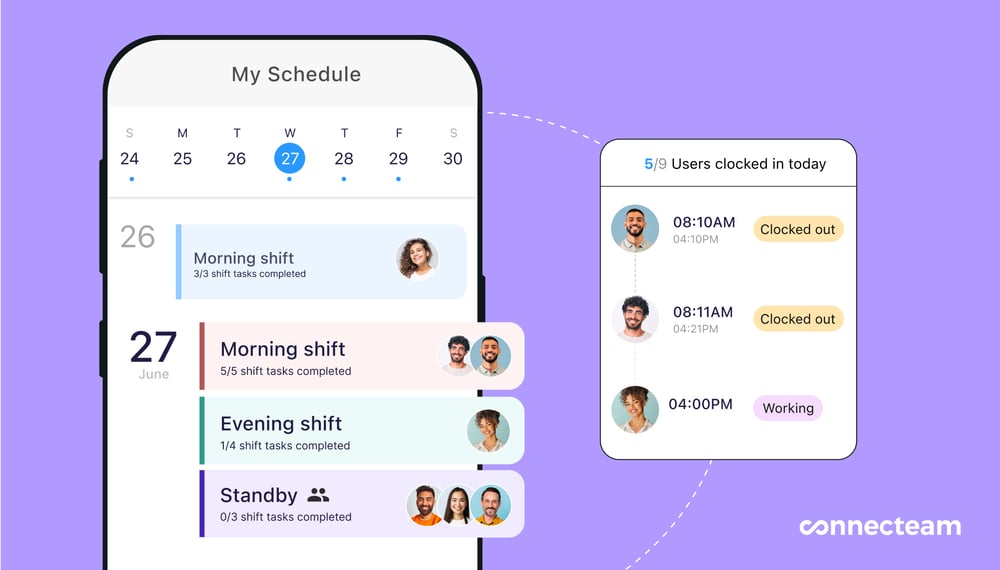
Connecteam is a powerful all-in-one workforce management platform designed to streamline communication, task management, and employee engagement—all within an easy-to-use mobile app.
Why I chose Connecteam: Connecteam stands out for its intuitive design, comprehensive HR tools, and affordability, making it a top choice for businesses looking to simplify operations and boost team productivity.
Let’s take a closer look at the features that make Connecteam shine.
Effortless employee rostering
I like that Connecteam’s employee scheduler comes with an intuitive drag-and-drop interface, allowing managers to create, adjust, and manage shifts in seconds. Pre-set shift templates, duplicate scheduling, and automated conflict detection ensure full coverage without double bookings or over-scheduling.
What’s really cool is the 1-click AI scheduler, which instantly assigns slots to the right person at the right time, accounting for holidays and availability.
Employees can claim open shifts, request swaps, or update availability directly from the app. Automated reminders and push notifications keep teams informed, reducing no-shows and last-minute confusion. These features eliminate unnecessary back-and-forth while ensuring businesses maintain the right staffing levels at all times.
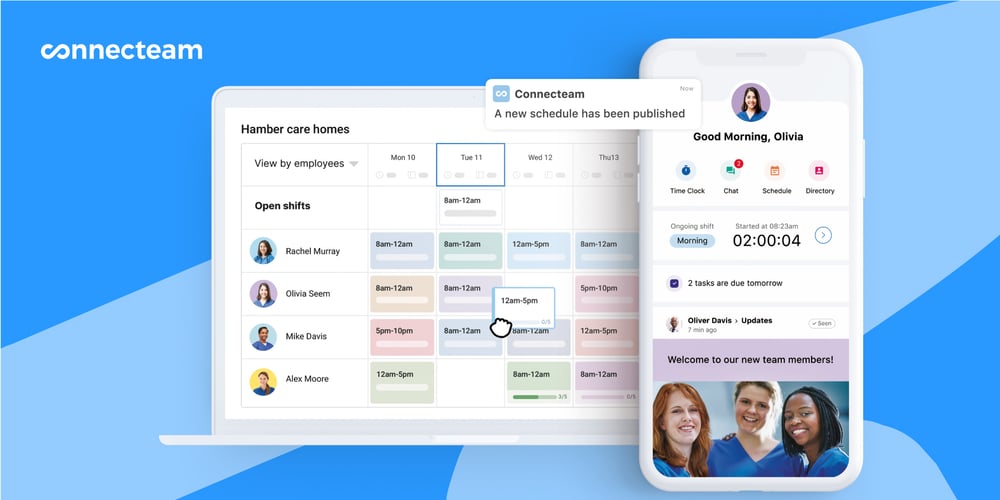
For Australian businesses, Connecteam can help ensure compliance with Fair Work Award conditions, including penalty rates, overtime rules, and meal break requirements. For instance, I appreciate how it automatically alerts you to overtime hours and enables you to schedule and enforce breaks.
Accurate time tracking with GPS & geofencing
The built-in digital employee time clock lets employees clock in and out seamlessly from their mobile devices, while GPS tracking and geofencing ensure that shifts begin and end at the right locations.
What I really appreciate about Connecteam is that managers gain full visibility into attendance, reducing time theft and buddy punching. Connecteam’s automated overtime tracking helps businesses control labor costs by alerting managers when employees approach their limits.
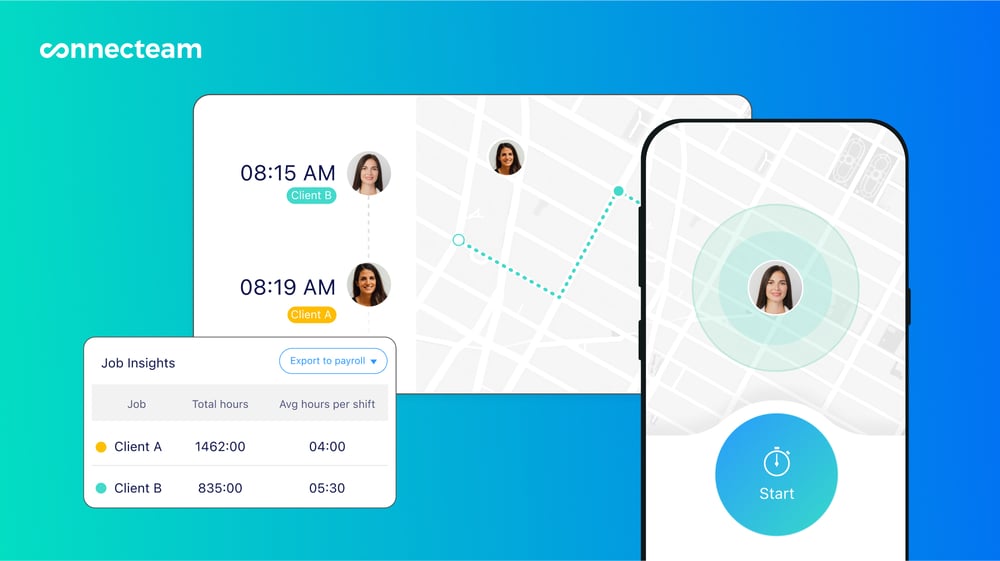
Break and compliance tracking ensures adherence to labor laws, helping companies avoid costly violations.
Payroll becomes effortless with 1-click timesheet exports that integrate directly with leading payroll providers (including Xero), eliminating manual errors and saving valuable administrative time.
Finally, I think Connecteam is great for helping Australian businesses stay on top of wage compliance obligations under the Fair Work Act with these payroll features and solid record-keeping.
Seamless communication and team engagement
Keeping a workforce connected is easy with built-in chat, company newsfeeds, and automated updates. Announcements, shift changes, and policy updates can be shared instantly, ensuring no critical information is missed.

Managers can send targeted messages to individuals, teams, or entire departments, while employees can access important resources, ask questions, and provide feedback in real time. I think this is essential for improving transparency, strengthening team collaboration, and fostering a more engaged workforce.
Simplified task and compliance management
I love that Connecteam goes beyond scheduling by allowing businesses to assign and track tasks with ease with its employee task tracking features. Managers can create task checklists, attach documents, and set deadlines, ensuring every employee knows what needs to be done and when.
For compliance-heavy industries, Connecteam ensures that all certifications, licenses, and important documents are stored and easily accessible. You can set expiration dates on documents, and employees receive automatic reminders—preventing expired certifications from disrupting operations.
Easy mobile training and onboarding
I think bringing new workers up to speed is so easy with mobile-first training software for employees. Businesses can use the AI Course Creator to instantly build customized training modules that include videos, quizzes, documents, and interactive content, making learning engaging and accessible.
Managers can track completion rates and employee progress, ensuring teams comply with industry standards and company policies. This approach saves time, reduces training costs, and ensures every employee has the resources they need from day one.
Flexible time off and availability management
I find managing employee time off requests and availability super easy with Connecteam’s self-service leave management tools.
Employees can submit vacation requests, sick leave, and shift preferences through the mobile app, while managers can approve or decline requests instantly.

Built-in tracking ensures that paid time off (PTO) balances and leave quotas are always up to date, preventing scheduling conflicts and improving overall workforce planning.
Real-time reporting
Connecteam provides businesses with real-time analytics and workforce insights, allowing managers to make data-driven decisions.
Track labor costs, monitor attendance trends, and identify scheduling inefficiencies—all from a single dashboard.
I highly recommend the customizable reports, which offer detailed breakdowns of hours worked, overtime costs, employee productivity, and compliance metrics, helping businesses stay ahead of potential issues before they escalate.
Connecteam also offers a free for life plan – Try Connecteam here!
Key Features
- AI employee scheduler
- GPS location tracking
- Customizable checklists and forms
- Team communication and chat
- Leave management
- AI Course Creator
Pros
- Comprehensive HR functions
- Affordable pricing
- Responsive customer support
- Mobile-first, user-friendly experience
Cons
- More integrations in development
Pricing
Free-for-life plan availablePremium plans start at $29/month for 30 users
14-day free trial, no credit card required
Start your free trial -

Deputy — Good for user-friendly interface
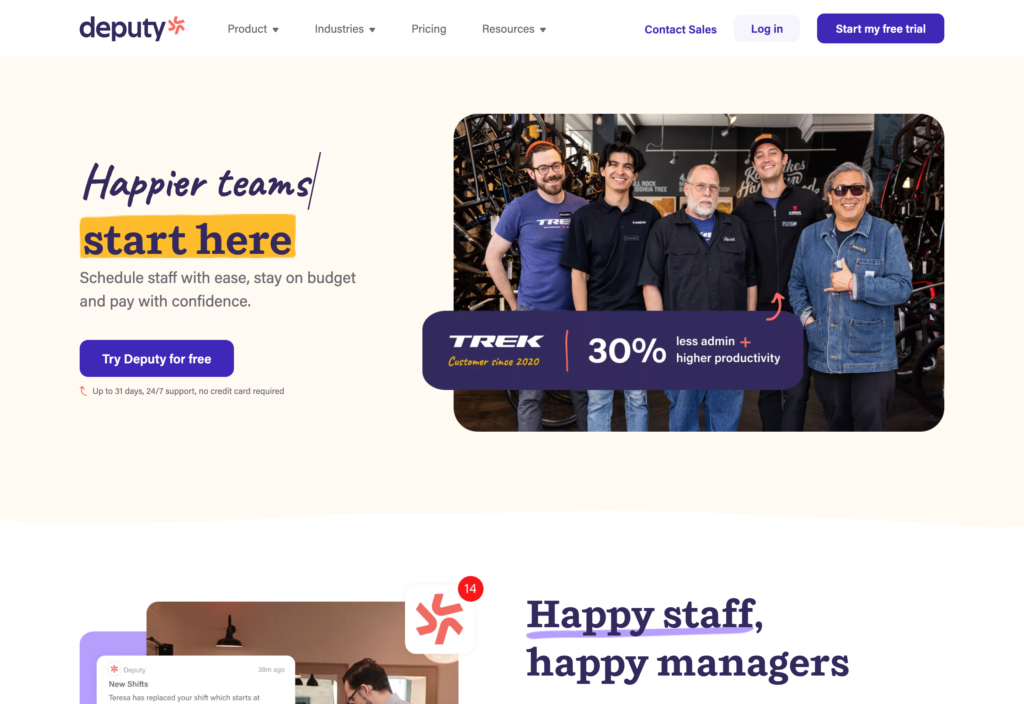
What’s new with Deputy
Deputy recently raised its base price from $4.50 per user/month to $5 per user/month. Existing clients are now being moved to the new pricing, significantly raising costs for many.
Deputy is a popular employee scheduling software that helps businesses manage shifts, track time, and ensure compliance with labor laws.
Why I chose Deputy: I was immediately drawn to Deputy for its all-in-one approach to workforce management, offering an easy-to-use platform that covers scheduling, time tracking, and compliance.
I appreciated its global accessibility, which makes it a strong choice for businesses operating in multiple countries.
Rostering and time tracking
One of Deputy’s standout features is its scheduling tool. The platform’s drag-and-drop interface is simple and effective, allowing managers to create shifts from scratch or modify existing ones.
I particularly like the AI-powered auto-scheduler, which makes creating schedules based on demand, employee availability, and labor laws a breeze. This feature helps to eliminate errors, save time, and ensure fairness.
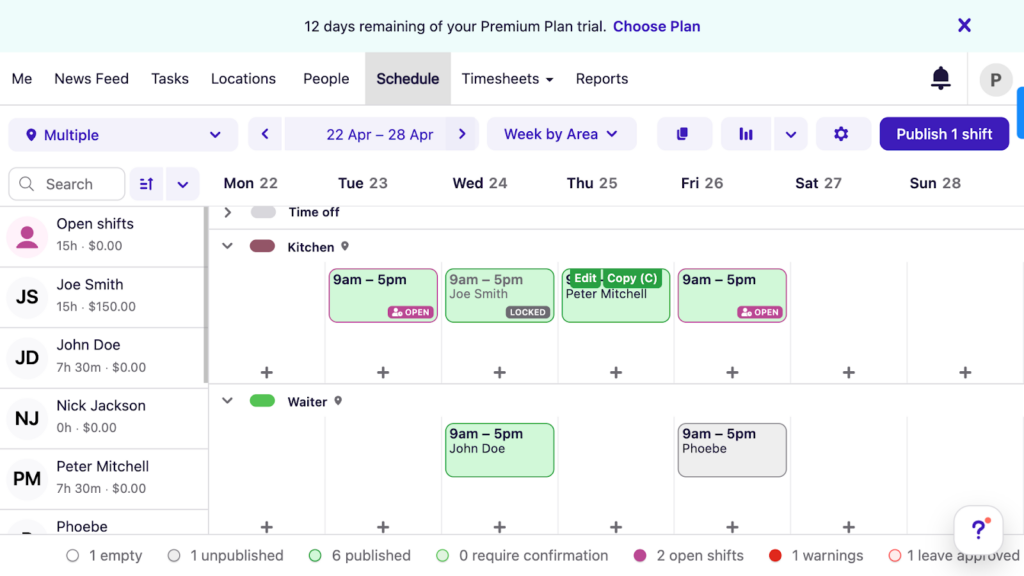
Deputy’s scheduler gives a clear overview of your staff and their scheduled work times. Additionally, employees can request shift swaps and indicate their availability, reducing scheduling conflicts.
The time-tracking functionality is also impressive. Employees can clock in and out through web browsers, smartphones, or shared kiosks. For businesses looking for added security, biometric facial recognition and geofencing features are available to prevent buddy punching.
The flexibility to track time via various devices is a big plus—though I wish the mobile app had offline functionality.
Timesheets and leave management
Timesheets in Deputy are straightforward to manage. Managers can easily review, edit, and approve timesheets populated with time-tracking data—and export them to payroll software like Gusto or OnPay for seamless payment processing.
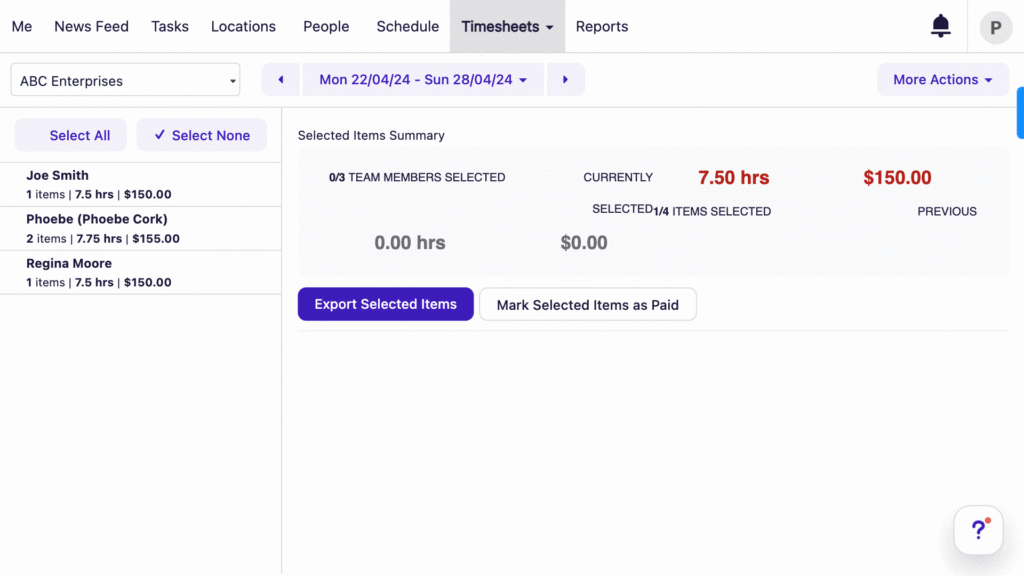
Exporting employee timesheets to an external payroll system is fairly easy and straightforward. I find this integration extremely helpful for reducing errors and speeding up payroll. The platform also provides tools for managing employee leave, such as the ability to track leave balances and approve requests.
This makes it easier to ensure that employees’ time off is accounted for when creating new shifts. Unfortunately, Deputy doesn’t warn you when you’re scheduling an employee who has a pending leave request that isn’t yet approved, which could lead to some unhappy employees.
Task management and communication tools
Deputy’s task manager is another highlight. You can assign tasks to specific employees, locations, or teams and set due dates, making it a valuable tool for project management. While I would’ve liked the ability to add attachments or set more complex task recurrence options, it’s still a solid tool for basic task tracking.
Additionally, the newsfeed function helps to improve team communication. Managers can post announcements or send direct messages to individuals or groups. It’d be nice to have a messenger-style interface for more private communications, but the feature works well for general team updates.
Compliance and reporting
Deputy excels at ensuring compliance with labor laws. The platform lets managers set mandatory breaks, track overtime, and adjust schedules to stay compliant with local regulations. This feature is especially useful for businesses operating in multiple regions with different labor laws.
Deputy also offers various customizable reports. These include attendance, leave management, and timesheet data—all which can be exported for further analysis. Although custom reporting is limited to pre-set templates, it still offers valuable insights for monitoring staffing and performance.
Key Features
- Time clock
- Task manager
- Newsfeed
- Leave management and reporting
Pros
- Biometric facial recognition
- Good mobile app functionality
Cons
- Lack of in-built payroll
- Advanced security requires higher-tier plan
Pricing
Starts at $4.50/user/month Trial: Yes — 31-day Free Plan: No
-

Tanda — Good for workforce management and compliance
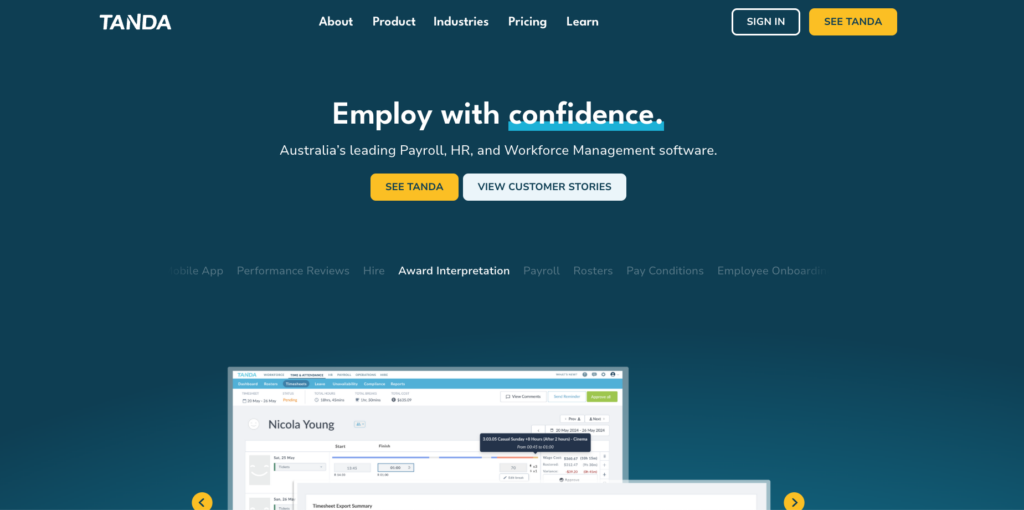
Tanda is a popular workforce management software that helps businesses manage shifts, track time, and ensure compliance with Australian labor laws.
Why I chose Tanda: I enjoyed Tanda’s ease of use and its broad workforce management offering—from scheduling and onboarding to compliance and payroll.
Rostering and time tracking
One of Tanda’s standout features is its flexible scheduling tool. I like the ability to create rosters and use pre-built templates, which helps save time. Tanda also offers automated features that make it easy to track employee hours and manage shift swaps.
The time clock functionality is great for keeping accurate records. Employees can clock in and out using mobile devices, with GPS tracking and photo verification ensuring that timesheets are always accurate. The time clock is also integrated with payroll, ensuring that employees are paid correctly without much manual input from the business.
Onboarding and employee experience
Tanda makes onboarding new employees effortless with its paperless process. You can easily upload documents and have new hires sign them digitally, saving time and reducing paperwork.
Employees can access their schedules via the mobile app, making it easier for them to stay updated.
One drawback I found? There are no in-built messaging or chat functions—so Tanda isn’t really an all-in-one solution.
Compliance and reporting
Tanda ensures compliance with Australian labor laws. It offers tools for tracking mandatory breaks, overtime, and other work requirements, which keeps the business compliant with minimal effort.
The reporting capabilities allow you to generate reports on attendance, wages, and labor costs. However, most of the reporting is one-dimensional rather than multi-dimensional, and I didn’t find it as advanced as I’d like in terms of viewing options. For example, I wish there was the ability to analyze employee attendance by department, shift, and day of the week concurrently, which would allow for deeper insights.
Key Features
- Employee scheduling
- Time clock and GPS tracking
- Onboarding and document signing
- Payroll integration
Pros
- Easy-to-use interface
- Strong compliance features
Cons
- Limited advanced reporting options
- Some features available only on higher-tier plans
Pricing
Contact vendor for a quote Trial: Yes Free Plan: No
-

Roubler — Good for growing businesses
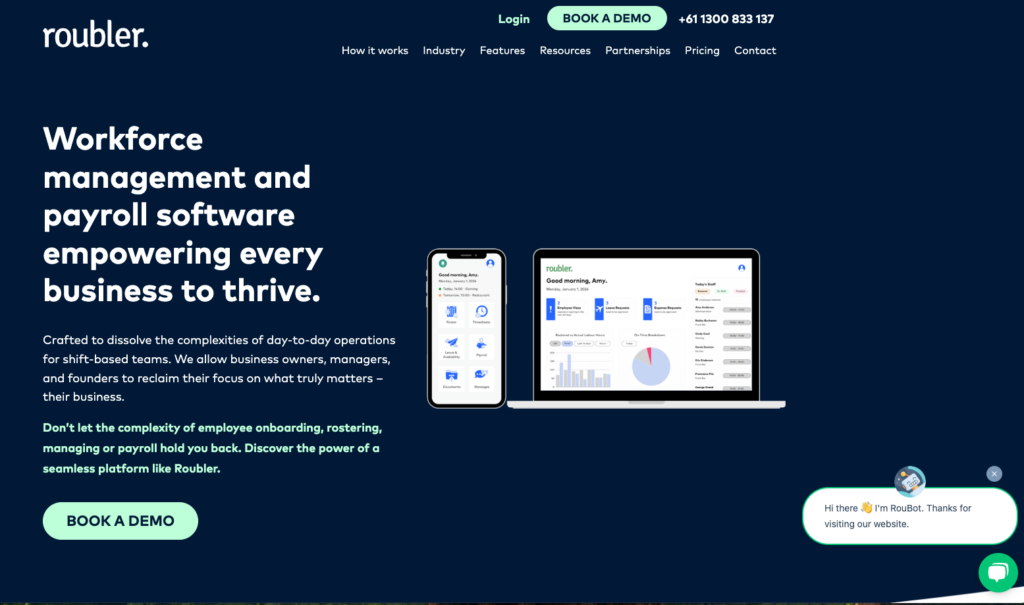

Somebody inputting a new leave request on Roubler. Roubler is a comprehensive HR software solution designed for small to medium-sized businesses.
Why I chose Roubler: I like how it combines multiple HR functions into a single, easy-to-use, and highly configurable system, making it a good choice for companies looking to centralize their operations and reduce the time spent on manual HR tasks.
Onboarding
One of Roubler’s standout features is its automated onboarding, making new joiner setup a breeze. With everything automated, new hire paperwork and data flows seamlessly into payroll, rostering, and time and attendance.
You can also create tailored induction and training programs, incorporating quizzes and compliance so the new joiner experience is consistent and easily available through the Roubler app or web.
Rostering and time tracking
I was impressed with Roubler’s single click rota feature and the level of automation it’s capable of. The smart rostering features automatically schedules staff based on predicted demand and even forecasted hourly sales (if data is imported from your point-of-sale system).
Roubler’s time tracking feature enables employees to clock in and out via the mobile app, and managers can monitor shifts in real time.
It’s easy to track attendance and absences, and the system helps avoid payroll errors by capturing accurate time data. The leave management system also streamlines vacation requests and sick leave, reducing the need for manual approval processes.
That said, some users have reported bugs in the system—like holiday requests deleting themselves with no explanation and the app freezing while users are in the middle of tasks. This might put off some businesses that prioritize reliability and efficiency.
Performance management
Roubler offers an integrated performance management system that allows you to set goals, track progress, and provide feedback to employees.
I found the analytics feature particularly helpful, as it provides deep insights into turnover rates, productivity, and absence trends. This is a big plus for businesses that want to make data-driven decisions about staffing and performance management.
Scalability and flexibility
What I appreciate about Roubler is its scalability. It’s easy to customize workflows, fields, and forms to suit your business requirements. This flexibility means Roubler can grow with your company.
Key Features
- Time and attendance management
- 1-click rotas
- Performance tracking and reviews
- Customizable workflows and forms
Pros
- Highly configurable
- Easy-to-use mobile app
Cons
- Lacks 24/7 support
- Some bugs and lagging on system
Pricing
Contact vendor for pricing Trial: No Free Plan: No
-

Ceridian Dayforce — Good for comprehensive features
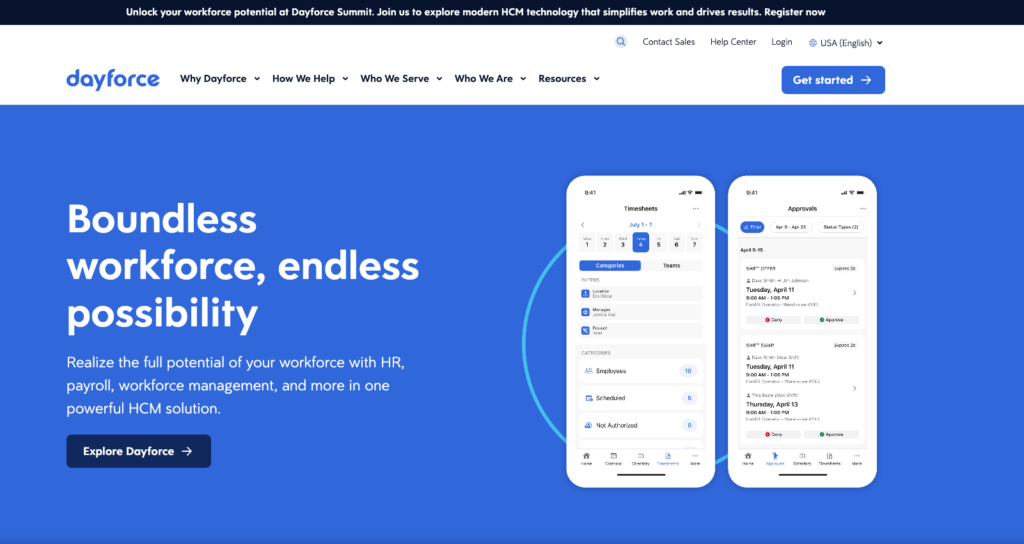
Ceridian Dayforce is a cloud-based HRM software that integrates HR, payroll, workforce, and talent management.
Why I chose Ceridian Dayforce: I like how this Humanforce alternative offers real-time data access and AI-driven insights for businesses that need to make quick, informed decisions.
Rostering and time tracking
Dayforce’s workforce scheduling tools are highly customizable, helping businesses optimize shifts while staying within labor budgets. The AI-powered scheduler reduces unnecessary overtime by factoring in employee availability, skills, and labor costs.
Employees can also view their schedules and swap shifts through the self-service portal, which is a major time-saver. That said, the platform’s scheduling interface isn’t as intuitive as some competitors, and it takes time to set up properly.
Time tracking is integrated directly with payroll, which reduces discrepancies and ensures accurate payments. Employees can clock in and out via mobile, web, or biometric kiosks. However, businesses may find that manual retroactive pay adjustments can be a hassle, as the system doesn’t automate them.
Payroll and compliance management
One of Dayforce’s strongest features is its payroll management. The system ensures accurate and timely payments across multiple countries, making it a great choice for global businesses. It automatically calculates taxes and deductions, reducing compliance risks.
Dayforce also simplifies compliance with local Australian labor laws, such as the Fair Work Act 2009, by automating break tracking, overtime rules, and benefits management.
Employee self-service and mobile access
Employees can access their pay stubs, request time off, and update personal details through the Dayforce mobile app. I’m a big fan of the Dayforce Wallet feature, which lets workers access earned wages before payday.
While this self-service functionality is useful, I think the mobile app interface could be more intuitive, and I wish it worked better for admins. For instance, certain reports still require desktop access for full functionality.
Analytics and AI-powered insights
Dayforce offers real-time analytics to help businesses track workforce metrics like turnover, attendance, and labor costs.
AI-driven tools help optimize workforce planning by predicting demand and adjusting schedules accordingly.
Key Features
- AI-powered workforce scheduling
- Flexible scheduling options
- Real-time analytics and reporting
- Employee self-service via mobile
Pros
- All-in-one workforce and payroll platform
- Strong compliance and labor law automation
Cons
- Manual retro pay calculations required
- Limited integrations
Pricing
Contact vendor for a quote Trial: No Free Plan: No
Compare the Best Humanforce Alternatives
| Topic |
 Start for free
Start for free
|

|

|

|

|
|---|---|---|---|---|---|
| Reviews |
4.8
|
4.6
|
4.4
|
4
|
4
|
| Pricing |
Starts at just $29/month for the first 30 users
|
Starts at $4.50/user/month
|
Contact vendor for a quote
|
Contact vendor for pricing
|
Contact vendor for a quote
|
| Free Trial |
yes
14-day
|
yes
31-day
|
yes
|
no
|
no
|
| Free Plan |
yes
Free Up to 10 users
|
no
|
no
|
no
|
no
|
| Use cases |
The best alternative to Humanforce
|
Good for user-friendly interface
|
Good for workforce management and compliance
|
Good for growing businesses
|
Good for comprehensive features
|
| Available on |
The Best Humanforce Alternative for Managing Your Workforce
While Humanforce is a well-known workforce management solution, several strong alternatives offer better flexibility, affordability, and usability.
Among the 5 alternatives I explored, I think Connecteam stands out as the best choice. With its intuitive design, comprehensive features, and cost-effective pricing, Connecteam simplifies workforce management, enhances team communication, and optimizes daily operations like no other platform.


